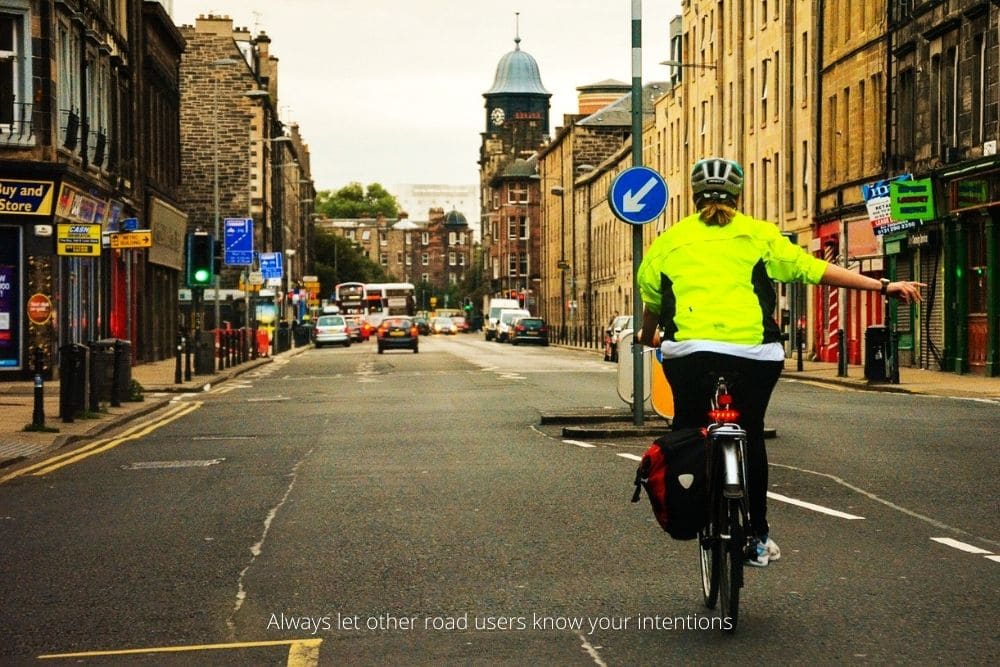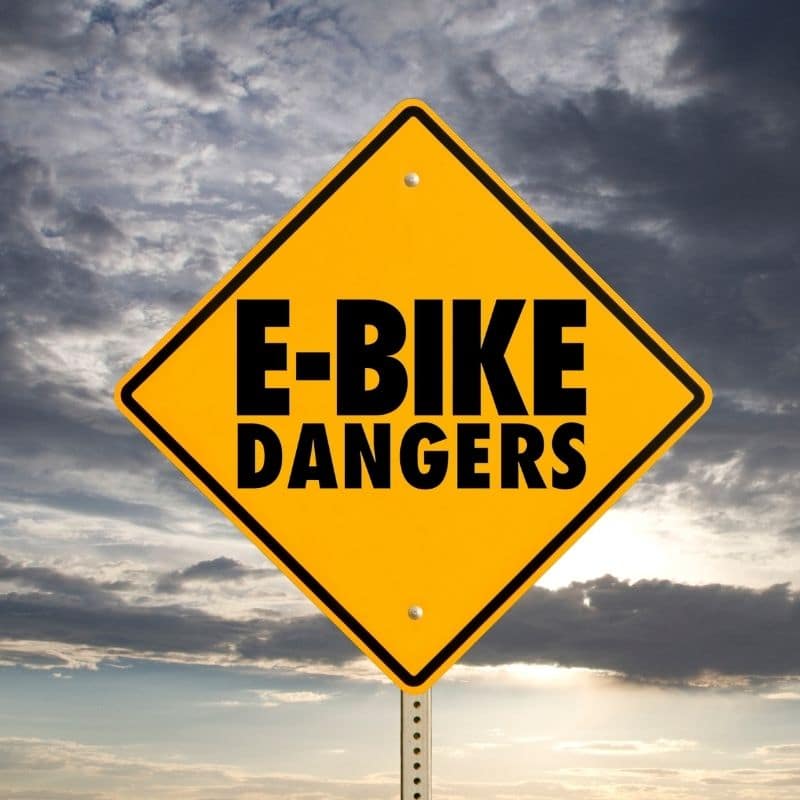What Are the Risks on an Ebike?
With every mode of transport that comes along, there is always the questions. Is it safe? Is it dangerous? Will it endanger others? Ebikes, still being a relative novelty, and an unknown quantity in wide parts of the world, despite their obvious evolution from the conventional bicycle, are also under this safety-conscious scrutiny.
Automobiles and Trains
The Dangers of Invention and Innovation!
Automobiles:
“Red flag laws were laws in the United Kingdom and the United States enacted in the late 19th century, requiring drivers of early automobiles to take certain safety precautions, including waving a red flag in front of the vehicle as a warning.” [source]
Trains:
In the UK, as well as the above law, there was also the ‘Red Flag Act’ which entailed even more walkers with red flags, and this kind of extreme caution lasted from 1865-1896. [source]
The above were modes of transport able to carry some, or many, passengers, at once. Which was a novelty then. Also, most of the other traffic they would encounter consisted of horse-riders, or horses and carts, and I’m sure the proposers of such laws didn’t want to scare the horses back then.
Ok, we’re digressing here. What has an ebike got to do with a steam locomotive? It’s obvious that, back in the day, people were anxious and scared of big mechanical monsters! An ebike is like a new-born lamb in comparison.
Personal Transport
Is There Really a Danger with Personal Transportation?
We can look back and scoff at how ridiculous the law-makers of the 19th century dealt with new technology. But, back then, locomotives and automobiles were large, noisy, and smoky beasts, so I daresay, some carts were overturned and their loads ruined as horses bolted, as a result of the transportation advances of the mechanical age.
Personal transport though, like the bicycle, was developing a pace also, but a bicycle is unlikely to frighten a horse, unless it is a particularly timid and nervous beast, and most pedestrians probably looked on cyclists with pity back then.
The bicycle advanced in technology and design, and until recently, was relatively unencumbered with legislation anywhere in the world that would have too negative an effect on its everyday use. That was until recently when the ebike, or electric bicycle, came into widespread use.
It would be highly contentious to state they cause panic in the street. Most people who look at an ebike, don’t recognize it as other than a normal bicycle. There are some though, who think electric bicycles are that much of a danger to the general public, that they would probably welcome the return of the Red Flag Laws, just for ebikes!

So, Are Electric Bikes Dangerous?
In most countries of the world ebikes are severely restricted in speed. In reality, to go fast on most ebikes, as in over the speed limit where the motor cuts out and offers no more assistance, you have to be physically pedalling rapidly, or going down a steep hill. Either way is no different from getting speed up on a normal traditional bicycle. So, speed wise, ebikes are no more dangerous, either to the rider, or others, than a typical run of the mill bike.
Why is Electric Bike Assistance Speed Capped?
Ebikes are deliberately constrained so any assistance offered by the electric motor is cut before they reach any dangerous velocity at all. For more information, read Ebike Speed Limits, but suffice to say, in the US, Class 1 and Class 2 ebikes are assisted to a maximum speed of 20mph, though a Class 3 ebike with pedal assist can reach a heady 28mph before the motor power is cut. In the UK and in the EU, ebikes are limited to an assisted top speed of only 15.5mph. Most other countries in the world have restrictions on the maximum speed an ebike will have assistance to reach.
Can You Buy Super-Fast Ebikes?
Of course, other off-road ebikes can be legally purchased that an owner is perfectly free to tear along private roads on, or race around tracks on their own land without restriction. These off-road ebikes can be as powerful and fast as a high-powered motorcycle. Ebikes this powerful can be dangerous, but away from the public, they are mostly only dangerous to the rider. The general public can rest easy with these.
Why Ebikes May Be Safer
In some instances, ebikes may be safer, for the rider at least, than a conventional cycle. From a standpoint, they can take off faster, so are more easily capable of escaping danger, and riding an ebike with power at lower speeds gives you an agility to manoeuvre quickly away from hazards. Ebikes usually have better more efficient brakes fitted; therefore, they are more able to stop quickly to avoid collisions or obstacles.

Reckless Drivers
Cyclists, and now ebike users, have been forever, it seems, at the mercy of some reckless vehicle drivers. Such drivers can often, either deliberately or inadvertently, cause injury to cyclists. If they don’t cause physical injury, they certainly cause cyclists a great deal of stress and anxiety. What’s more, is the fact that they are rarely called to answer for their actions, and perhaps because they get away with it so much, is probably why these reckless drivers persist. It seems it is only when there is a serious accident, or a fatality, that any reckless driver is prosecuted by the law.
Reckless Cyclists
Possibly the percentage of reckless cyclists pounding the roads is around the same, pro-rata, as it is for reckless drivers. Perhaps better education regarding driving and cycling, and vice-versa, would be a better way to go than looking at expensive to implement restrictions, that are probably needless as far as most electric bicycle users are concerned. Ebike in Traffic – the Safe Way, provides some more information on how to cycle in traffic safely.
Conclusion
I would say, in the main, that ebikes are no more dangerous, either to the rider, or pedestrians, or other traffic users on the roads, than traditional bicycles. And not many people are of the opinion that a conventional bicycle is a dangerous contraption.
There are road users, both cyclists and vehicle drivers, albeit a small percentage, who deliberately, or through ignorance, flout the common laws of the road and can create dangerous incidences. This is a small amount of a large number though, and it would be mistaken, and foolish, to conclude that just because in one or two of these instances, an ebike was involved, then all ebikes are therefore dangerous.
Cautious perception can lead to false assumptions without real actual experience of an issue. It would be of benefit to ebike users, and others, and especially those who of a timid disposition, if they, and legislators, had real life experience of ebikes before crying for tougher laws and regulations, when in reality, there are sufficient, and probably over-zealous, restrictions in place already.
Ebikes are a positive force in the world today. Environmentally, they are a fantastic green method of personal transport, and should be promoted at every opportunity. Moreover, they are a healthy alternative to a commuter looking to cut down on car use for transport to work, or anyone, of any age, looking to keep fit and active. More and more restrictions because of a perceived notion of danger will do nothing but hinder their uptake.

